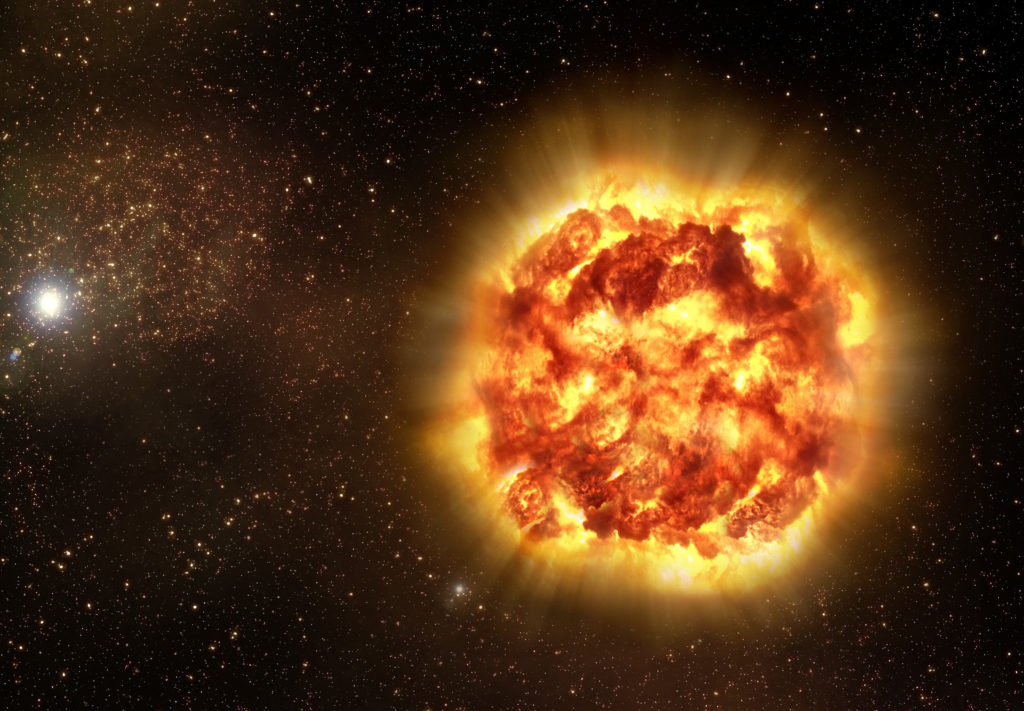4.1.3 What is the Universe Made of?

Artist’s impression of how Type Ia supernovae may look like as revealed by spectro-polarimetry observations. Learn more at: https://www.eso.org/public/images/eso0644a/
The key questions that need to be answered by astrophysicists are: What is really out there? And of what is it all made? Without this understanding it is impossible to come to any firm conclusions about how the universe evolved (NASA).
Our understanding of astronomy has grown and shifted since the Aristotelian mosaic, with the observation of subatomic particles and recent evidence of “dark” matter. We are now delving into the nature–or matter–of heavenly bodies, rather than just their movement. This US National Aeronautics and Space Administration (NASA) page lays out the different types of matter in the universe, according to observation and current theories.
Read: What is the Universe Made Of? // NASA
Guiding Questions:
- How long ago did scientists realize the universe was not only made up of atoms?
- Why did they refute and update their theory about the contents of the universe? Is there perfect agreement between theory and observation now?
- What hypotheses now exist regarding “dark” matter?
- What implications does the rate of expansion of the universe have for other theories, like particle physics?
- Do you think we’re on the cusp of a paradigm shift in astronomy, physics, and chemistry? (You might want to revisit 3.2.3, Structure of Scientific Revolutions.)
Thumbnail: Asymmetric Ashes. Photo Credit: ESO, 2006. Public domain.


